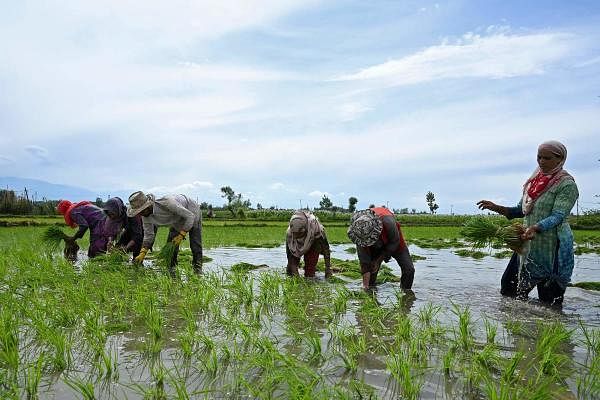
The two separate ordinances related to Farmers’ Produce Trade and Commerce and agreements on price assurance raise a number of important economic issues – apart from their controversial constitutional and legal basis.
Legally, they indicate an attempt by the executive to remove any judicial recourse to dispute resolution – a problem that will come back to haunt India due to our complex social and power-relations matrix. The objectives assume that the proposed changes are far superior and they introduce a fair, transparent and “mutually agreed remunerative price framework” and focus on the written contract. Unfortunately, the Indian agricultural ecosystem is far more complex and historically, the introduction of written agreements into land relations of various kinds has benefited those already with access to resources than the vast majority.
Rise of large organised participants
The road to remunerative prices is only through organised participants over the present millions of individual farmers. Organised private players are free to buy and sell anywhere and the rules apply anywhere except within the physical boundaries of the existing private or government market yards. Registration, creation of databases and interoperability of computer systems is at its foundation.
Traders, defined as any juridical person who buys farmers’ produce, have powers to buy and sell anywhere in the country subject to certain rules, primary of which is the need for the counterparty to possess a PAN card issued under the Income Tax Act, 1961. Electronic trading platforms are now empowered to trade with fewer likely restrictions. In short, the implication of this is that it allows for large investments by private participants across the agriculture value chain anywhere in the country without any interference from the states – despite the fact that most parts of the agricultural value chain are state subjects under the Constitution.
In the case of the ordinance on price agreements, there is an implicit encouragement of written agreements or “farming agreements” based on a forthcoming Central model farming agreement. Practically, written agreements are – in the present context of small, marginal and medium farmers who comprise about 97 percent of the total agricultural holdings – difficult to enter and enforce compliance due to their costs and cumbersome process, both of which are not solved in the proposed changes.
The sanctity of contract and enforcement of contracts was, and continues to be, the Achilles’ heel of the Indian economy with precious little change over the past decades. Low education levels and inability to understand the language of the contract are factors that will continue to play a central part. Hence, farming agreements are unlikely to be very different.
Farmer protection
The ordinance on trade requires that farmers are to be paid on the same day or within a maximum of three working days with the caveat that the receipt of delivery mentions the due date for payment being issued on the date of delivery itself. The useful aspect of the ordinances is that the farming agreements do not create rights against the proprietary rights of the landowners. However, the proposed changes do not offer any additional measures that increase confidence among the landowners that signing long-term contracts will not facilitate a litigious counterparty to get a foot in the door that may ultimately deprive them of their practical control over their precious holding.
In the era of rising land prices and multiple avenues to monetise land holdings only such protection will give the confidence to enter into written contracts. It is pertinent to note that this factor is largely responsible for the unwillingness of landowners to sign formal tenancy agreements. Without that, it is unlikely that small and marginal farmers will voluntarily consent to the long duration agreements.
A concern with the proposed changes is that they leave sufficient room for information asymmetry and interpretation of the contract to be detrimental to the small and marginal farmers. Present-day agriculture is critically dependent on various factors including the importance of credit either in cash or inputs, the role of intermediaries who operate within village social networks and unwritten social norms and behaviour even in economic activities, especially in the context of dispute resolution. Despite its many flaws the system meant that in case of disputes the interests of the farmers were pitted against individual and unorganised intermediaries with the institutions of the state (bureaucracy, police and judiciary) called to arbitrate in disputes, often in the full glare of the public.
Public interest and public pressure invariably led to instances where excesses were limited to the collateral political and other costs. These will now be replaced by dispute resolution where the bureaucracy is the final arbitrator of disputes by supplanting the courts, including the higher judiciary, where the farmers will be arrayed against possible national level, deep-pocketed and well-organised participants and its implications.
Any person well-versed with the practical working of the economy and society economy at the sub-district level understands these dynamics sufficiently well to understand which way power relations are stacked. With these changes, the only option for individual farmers may be to join a Farmer Producer Organisation (FPO). Unfortunately, the limited success of the cooperative movement in the past is in itself food for thought.
(S Ananth is an independent researcher based in Andhra Pradesh. The views expressed are strictly personal)
Disclaimer: The views expressed above are the author's own. They do not necessarily reflect the views of DH.